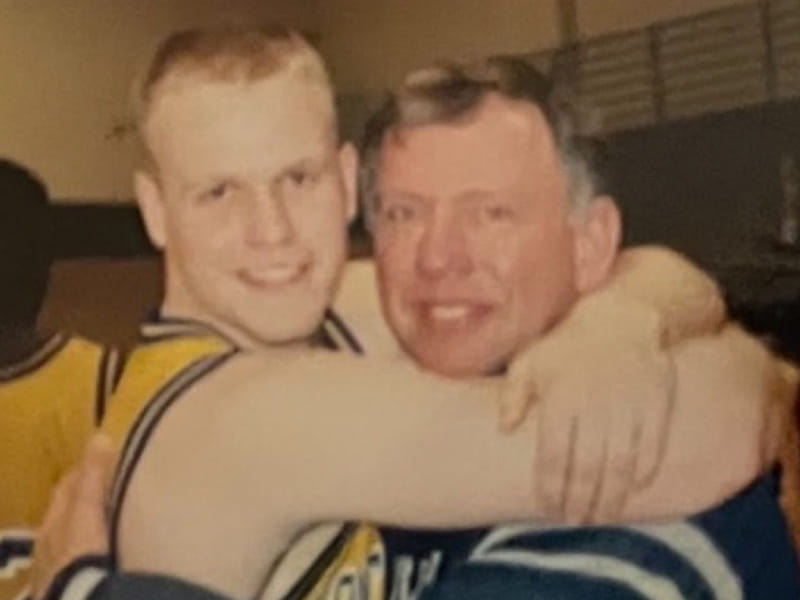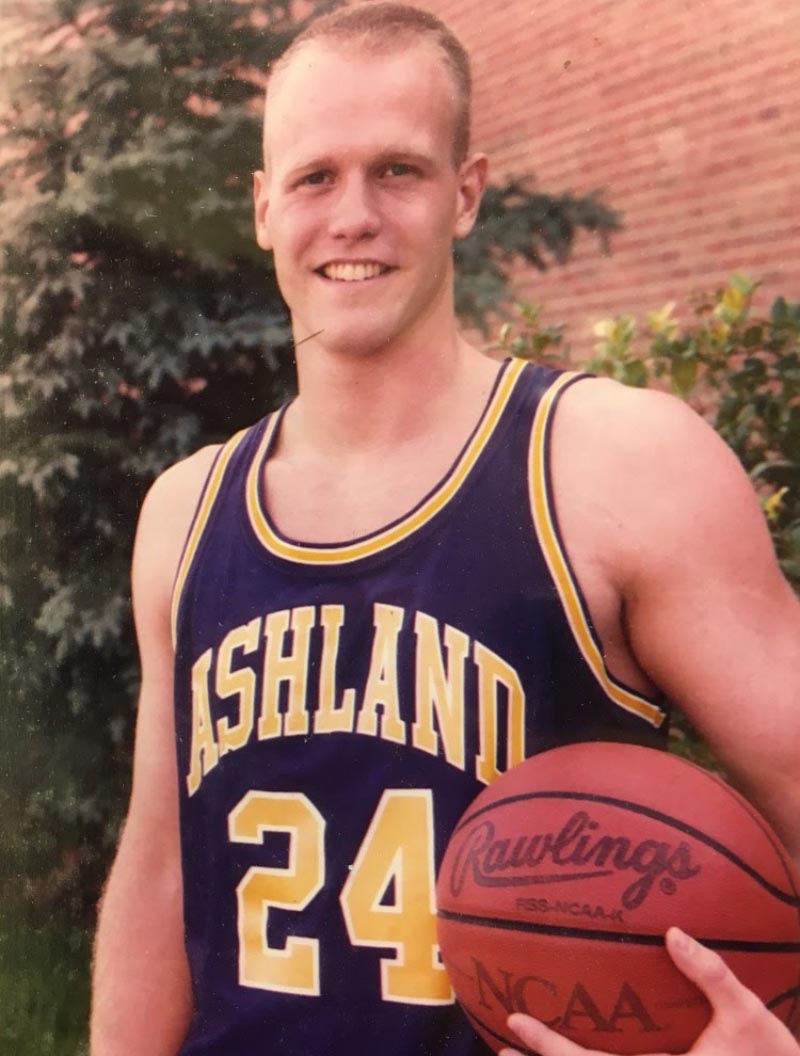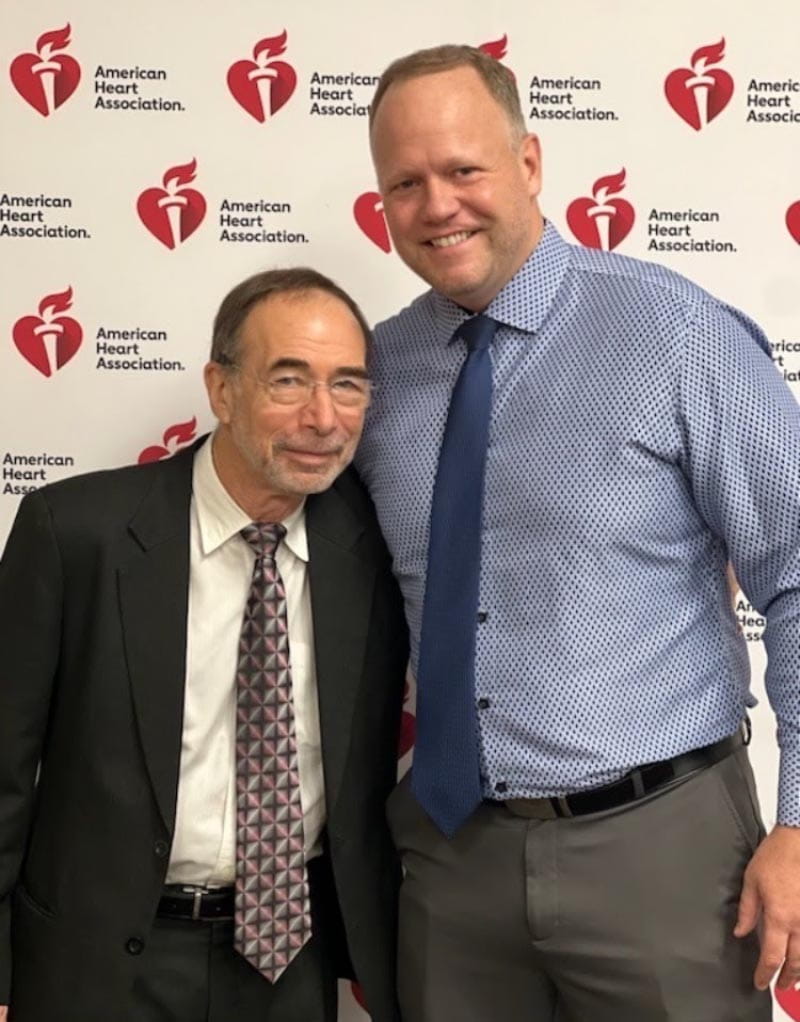Cardiac arrest as a teenager changed the trajectory of his life
By Diane Daniel, American Heart Association News

As Nick Knapp began his senior year at Peoria Woodruff High School, everything he'd ever worked for was coming together.
From his earliest days, he played every sport he could, from baseball to wrestling, diving to boxing. At age 8, he knew his true calling as an athlete was basketball. Not only was he tall, his father, Terry Knapp, had been a standout basketball coach.
Nick grew to 6-foot-5. He was one of the premier 3-point shooting guards in the country, along with being a straight-A student. No wonder scholarship offers poured in from schools around the country.
As a sophomore, he had committed to Northwestern University. The Big Ten school had outstanding academics and was close to home.
One afternoon early in his senior year, Nick, his younger brother and a bunch of teammates were playing a pickup game in the school gym. Nick caught a rebound and passed the ball down the court. He took a few steps, went down to his knees and fell over.
Terry and another coach happened to be in the gym at that moment. The two often walked together but, on this day, their usual path was blocked. That other coach also happened to work as an emergency medical technician.
Seeing Nick go down, Terry ran over, expecting to find a busted ankle or a knee. Instead, he saw that Nick wasn't breathing. His skin was turning blue.
In addition to coaching, Terry was a science teacher and a certified CPR trainer. While he'd taught hundreds of students how to give CPR, he'd never had to use it in an actual emergency.
Now his son's life was in his hands.
One player ran to call 911 while Terry yelled to his friend for assistance. The two performed CPR until emergency responders from the Peoria Fire Department arrived. They connected Nick to an automated external defibrillator, or AED, to help restart his heart. After three shocks, Nick's heart regained a sustainable rhythm.
At the hospital, Nick was put into a medically induced coma for several days to allow his brain to recover from the loss of oxygen. When he came to, he had some short-term memory loss. He gradually regained all his physical and mental abilities.
Doctors saw no reason for the cardiac arrest. After further testing, they could find nothing wrong with him. Still, just to be safe, Nick received an implantable cardioverter defibrillator, or ICD. If the device detects an abnormal heart rhythm, it delivers an electric shock to restore a normal heartbeat.
This was 1994. At the time, doctors told patients they could not strenuously exercise once they had an ICD.
"Your son will never be able to play basketball or even drive a car," a doctor told Terry.
"That's crazy," Terry said. "There's nothing wrong with him."
He asked Nick if he wanted to still play.
Nick absolutely did. (His younger brother, however, never returned to the game after Nick's cardiac arrest.)
Terry sought out top cardiologists in the country, especially those who had worked with elite athletes. Visits to several yielded the same conclusion: Nick could still play basketball, although they recommended he skip his senior season.
One of Nick's first visitors was a coach from Northwestern. He told Nick he would still have his scholarship. Later, the school echoed the doctors by encouraging him to not play until college. So that's what he did.
"I felt it was a bump in the road that I would overcome, and I could still be a success story for people in a similar situation," he said.
Except when Nick got to Northwestern, team physicians ruled him ineligible.
Even worse, to keep his scholarship, he had to attend practices and watch games from the sideline.
Eventually, Nick filed a lawsuit against Northwestern. He won. Then the decision was overturned on appeal. "Knapp vs. Northwestern University" became a well-known case in certain legal circles.
In 1997, Nick transferred to Northeastern Illinois University. He became known as the first Division 1 basketball player with an ICD.
The joy was short-lived. The school dropped NCAA basketball after that season due to a lack of funding.
The next year, he moved to Ashland University in Ohio to continue playing. When his eligibility to play basketball ran out, Nick gave up on his dreams of being a pro. Instead, he earned a master's degree in educational administration.

That same year, 2001, his defibrillator was removed due to repeated malfunctions. Doctors said a replacement wasn't needed.
Since then, Nick has had no cardiac concerns and is not on medication. Now 47, he lives in East Peoria and co-runs a large financial services firm.
Although he stopped shooting hoops, he stays physically active. He exercises at the gym throughout the week, enjoys bicycling, and plays golf, tennis and pickleball.
Every five years since the cardiac arrest, Nick and Terry have shown their gratitude to his rescuers by handing out T-shirts at the Peoria Fire Department. One side says, "CPR saves lives," and the other, "Thanks for saving mine," along with a caricature of Nick.
"Those first few minutes were crucial, and thanks to people knowing CPR and to EMTs, I was one of the lucky ones," Nick said.
"Nick's life is really a gift," Terry said. "Every time I see him, I think about it."
Nick's longtime electrophysiologist, Dr. Brian Olshansky, occasionally asks him to speak at cardiology conferences. He also gets calls every year from parents of kids with heart issues.
"I never wanted to be defined by basketball growing up, and I don't want the heart issue to define me either," Nick said. "But if anyone asks for help, I will always contribute. More than anything, I feel an immense feeling of gratitude."

Stories From the Heart chronicles the inspiring journeys of heart disease and stroke survivors, caregivers and advocates.





